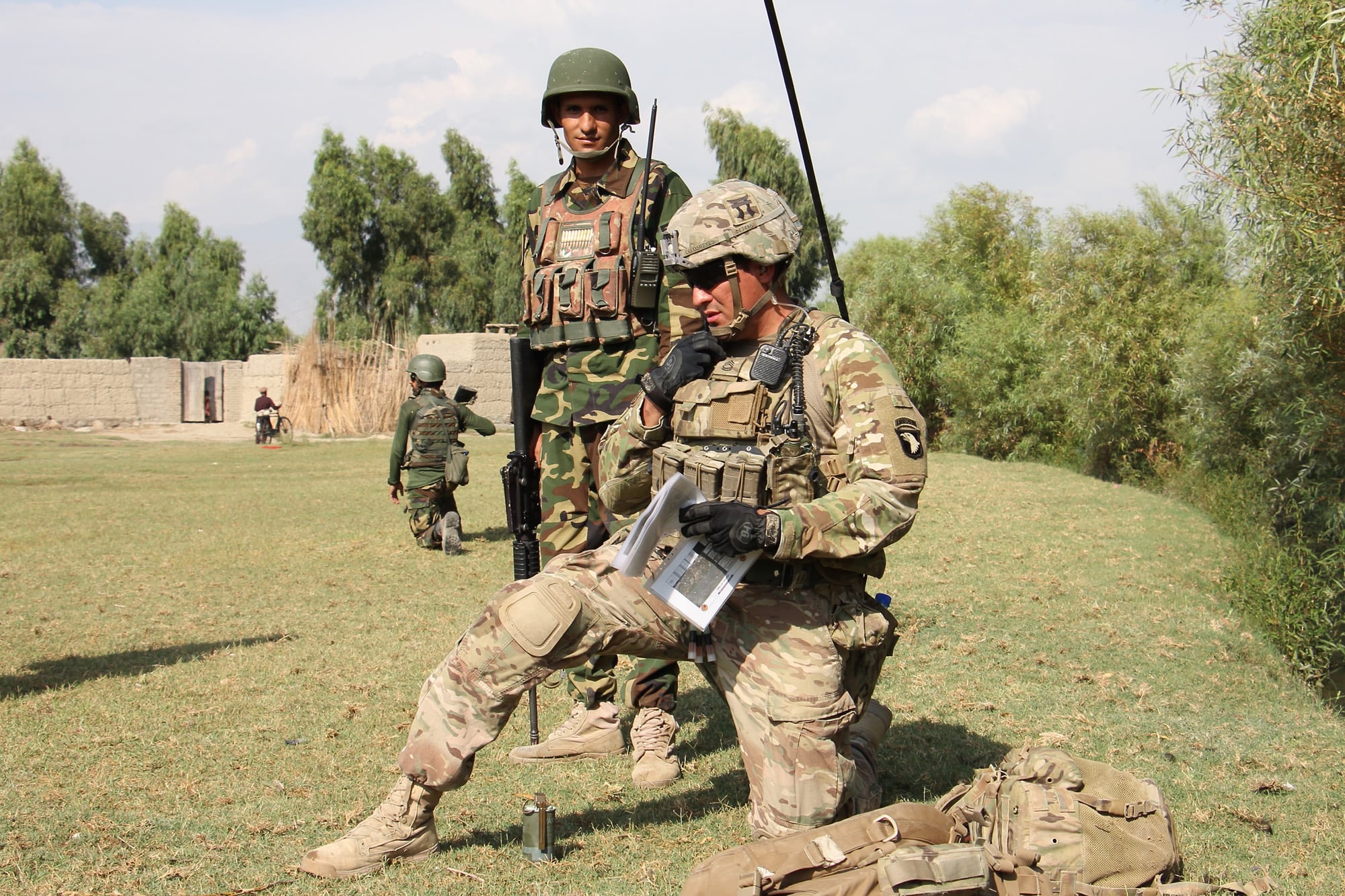HUNTSVILLE, Ala. ― In January, the Army took a step forward in its march toward the Multidomain Operations concept, standing up the first unit designed specifically to integrate land, sea, air, space and cyber capabilities across the services.
Dubbed the Intelligence, Information, Cyber, Electronic Warfare and Space battalion ― nicknamed I2CEWS ― the Joint Base Lewis-McChord, Washington-based unit is playing a key role in U.S. Army Pacific’s Multi-Domain Task Force, and a second iteration has been approved for U.S. Army Europe as well.
“The reality is all formations will have to become multidomain, or they’ll be irrelevant in the future,” Gen. Robert Brown, the head of USARPAC, said Wednesday at the Association of the U.S. Army’s Global Force Symposium.

A unit like I2CEWS is the first step to linking conventional units with those capabilities, but it’s likely the Army will transition to a mix of conventional and multidomain brigade combat teams, for instance, before making the full conversion to universal multidomain units.
“We don’t exactly know what kind of capabilities that will involve, but we know you’re going to have to have certain capabilities,” he said. “Counter-[unmanned aerial systems], that’s a given.”
The Army’s task force is halfway through its four-year plan, Brown said, but the ultimate goal is an operating concept that allows the Army, Navy, Air Force and Marine Corps to coordinate against a threat where necessary.
For example, an adversary’s ship trying to evade attack by a Navy submarine might skirt into the shallow waters around one of the Pacific Ocean’s 25,000 islands, where the surface vessel could be taken out by a land-based Army missile.
“Who would want to go against that?” Brown said, when they know that the U.S. military is working in total sync from all directions.
Hopefully no one, he added, because multidomain operations could be as much a deterrent as a dominant force for decisive action.
The trick will be smoothing out a procedure for that kind of operation, and figuring out who is in charge of making the final decisions and taking accountability for the effort.
And the four services will have to work together to align their processes and networks, either by modifying what they currently have or starting over with new technology.
“We’ve got to fight through the tendency to have a single-service solution, which is kind of the way we’ve all grown up,” Brown said.
RELATED

Mission command is favored over command and control, Brown said, rather than a tight chain leading to one master decision-maker at the top ― a unified understanding of the goals and considerations of a mission drives the individual decisions of every commander down to the ground.
“Command and control may have worked in the past, but it’s too slow,” Brown said. Rather, multidomain operations requires “trusted teams of professionals that can thrive in ambiguity and chaos.”
Clicking on all cylinders, multidomain dominance could hold rising tensions with China or Russia to Cold War levels, rather than World War III.
“The goal would be we’d never have to fight,” Brown said.
Meghann Myers is the Pentagon bureau chief at Military Times. She covers operations, policy, personnel, leadership and other issues affecting service members.




